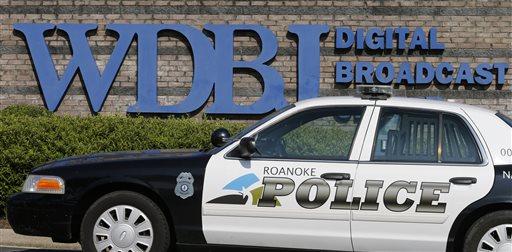
Section Branding
Header Content
Tough Lessons For Social Media: A GPB Sci-Tech Q&A
Primary Content

Last week, those who were following the shootings of three people live on TV suddenly found themselves looking at video of the shooting from the point of view of the gunman.
Twitter and Facebook became key parts of Vester Lee Flanagan’s plan to tell his side of the crime. But it may have come at a high price for those who were unwitting witnesses to two murders - and to the media that covered the incident.
Media observers are now talking about things like autoplay of Twitter videos, and asking if any changes need to be made in how they use social media to cover breaking news.
GPB's Bradley George talks about the tough lessons for social media with science and technology reporter Renay San Miguel.
·TV reporter Allison Parker and photojournalist Adam Ward, died in the shooting and a third person, Vicki Gardner, is recovering from a gunshot wound, and that all of this happened live in front of Roanoke station WDBJ’s viewers. Explain what happened after that and how social media became a part of the story.
It was horrifying enough to learn that Parker, Ward and their interviewee Gardner were all shot during a live report - as audiences were watching WDBJ’s morning news. We quickly learned that the alleged gunman was Flanagan, a former reporter at the station, and that he was on the run. Like a lot of other people, I was going back and forth between TV coverage of the search for Flanagan, and my Twitter feed – I follow a lot of news organizations and media influencers and it’s become a resource for information during breaking news. It was then that I saw a tweet from CNN media reporter Brian Stelter, who had found a Twitter feed from the alleged gunman and linked to it. I didn’t know if it was legitimate at the time, but it appeared that Flanagan was live tweeting his getaway, writing about his work relationship with the victims and making allegations against them. That aspect alone made this a very unusual story, but then the horror level went even higher. Flanagan tweeted that he had a video of the shooting and it was on his Facebook page. Then after refreshing his Twitter feed, a video appeared at the top and automatically began playing. It showed the point of view of someone walking up behind the WDBJ crew during their interview and raising a handgun. At that point I hit pause on the feed, but many others didn’t - and they were subjected to the video of watching three people being shot at very close range.
·The reason that video played without anybody clicking on it is because of the autoplay feature on some social media feeds. Why do Twitter and Facebook do that, and how do you turn it off?
Autoplay on Twitter actually started earlier in the summer, and it’s in response to requests from marketers who saw how a similar feature introduced on Facebook two years ago now results in about four billion video views a day on that social network. No clicking on the video is involved; just scrolling up to the video launches it. A lot of movie trailers on social media now work this way. All these social networks, along with Google, are in a battle for eyeballs and advertising dollars, but reportedly there was some internal debate at Twitter regarding what users would want to see vs. the need to make as much money as possible. We’ve seen Twitter become more like Facebook over the last couple of years – adding photo and video features, introducing promoted tweets – because it’s a publicly traded company and is under pressure to add users and revenue. You have to go into each network’s settings feature to turn them off, however, because the default is to play the videos. You have to opt out. On Twitter on Android and iOS, you go to the Settings areas of the Twitter app – on iPhones you’ll find it on the “Me” page – and then click on Video Autoplay and you can turn it off. For Facebook, you also have to go to the app’s Settings page, then click on Account Settings, and then click on Video and Photos and you can turn everything off.
·Facebook, Twitter and YouTube immediately shut down Flanagan’s accounts on those networks, but all of this has reignited a debate about how to use social videos and the role that social media plays in breaking news.
Especially when you consider how Flanagan knew what he was doing regarding social media. The social networks are going to have to figure out a process for how to handle graphic, disturbing videos during these very fluid situations where things can happen very fast. They’ll also have to work with law enforcement since all of this is now evidence, and also provides clues into the gunman’s thoughts and motivations. Media organizations were quick to pass along ways to turn off auto play once all of this became known, but for many users it was way too late. Some reporters also encouraged their colleagues to not share Flanagan’s video, but again for many the damage was done.
Bottom Content

